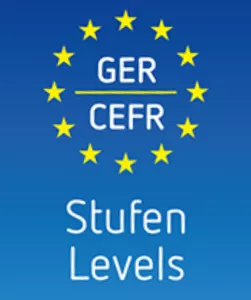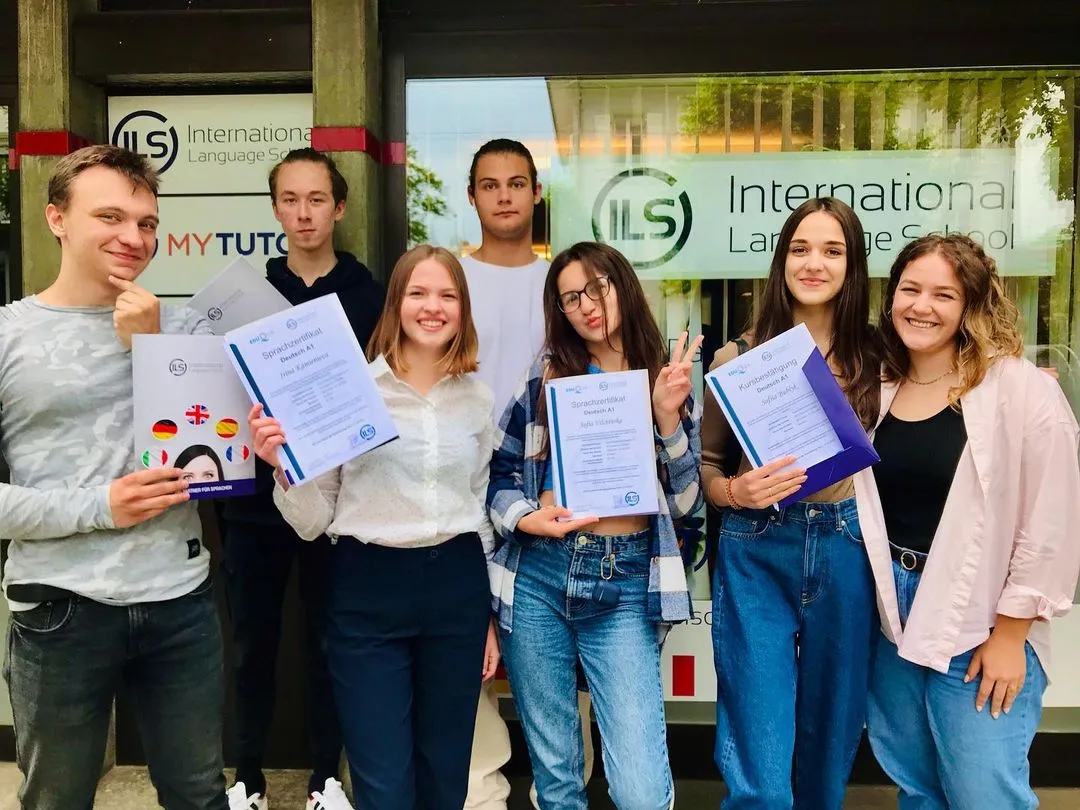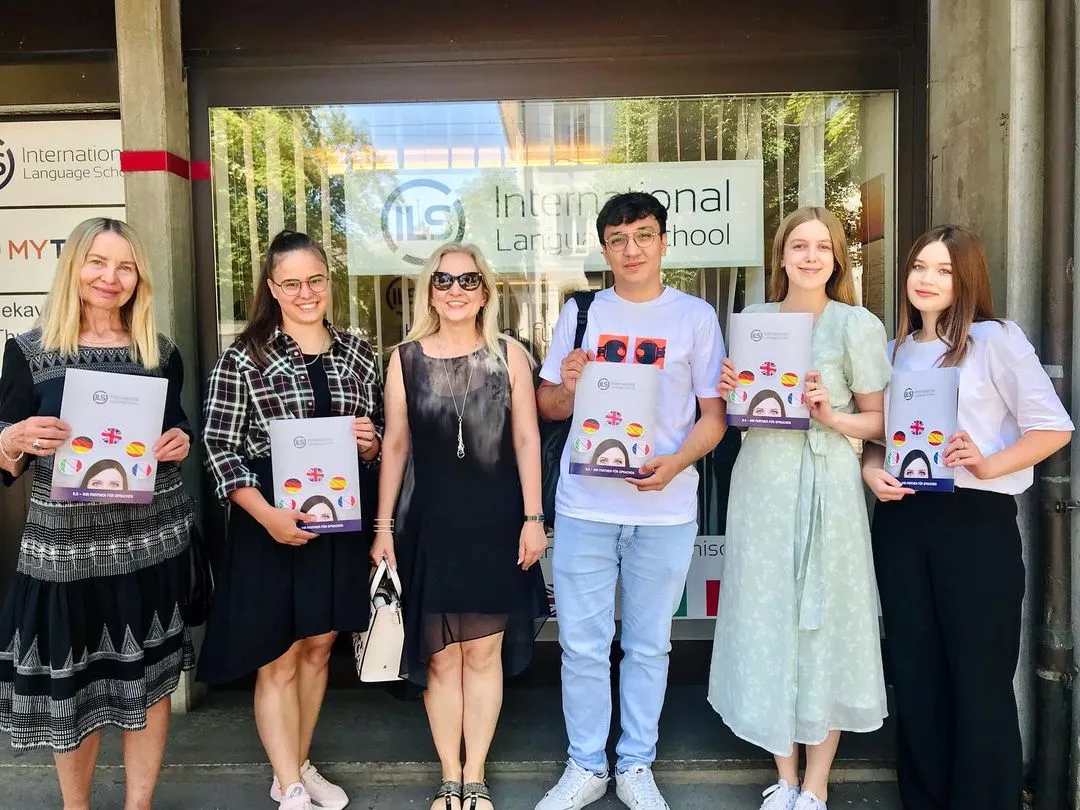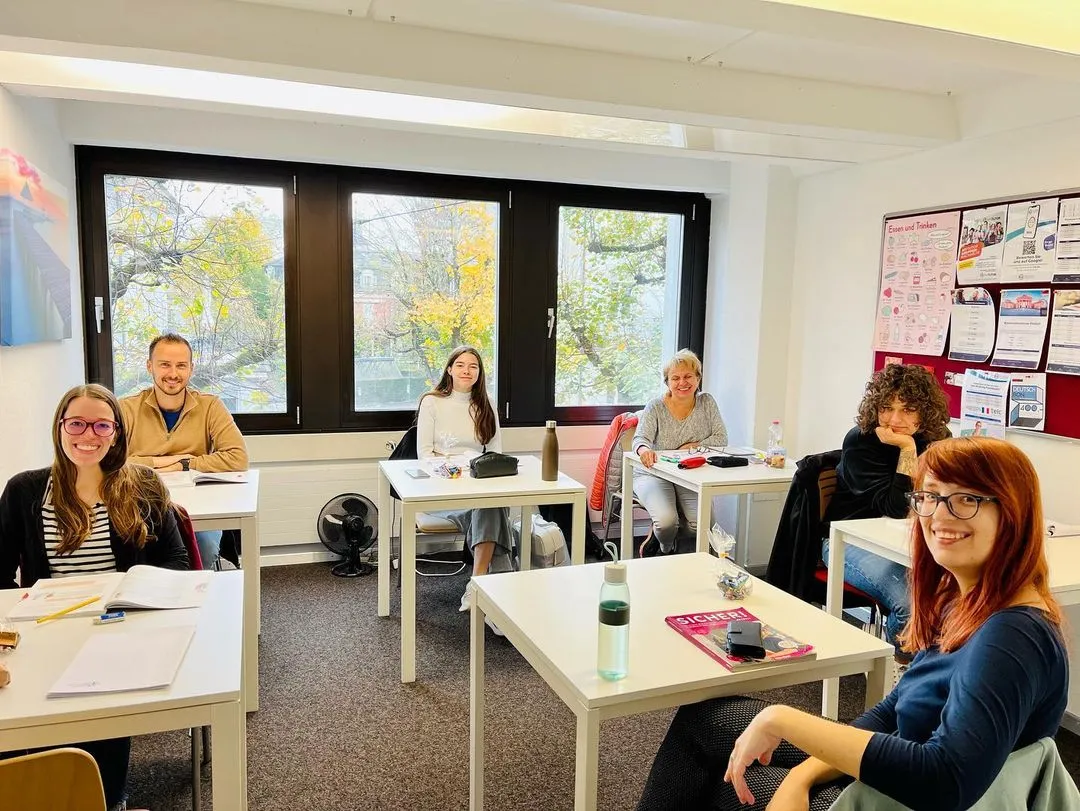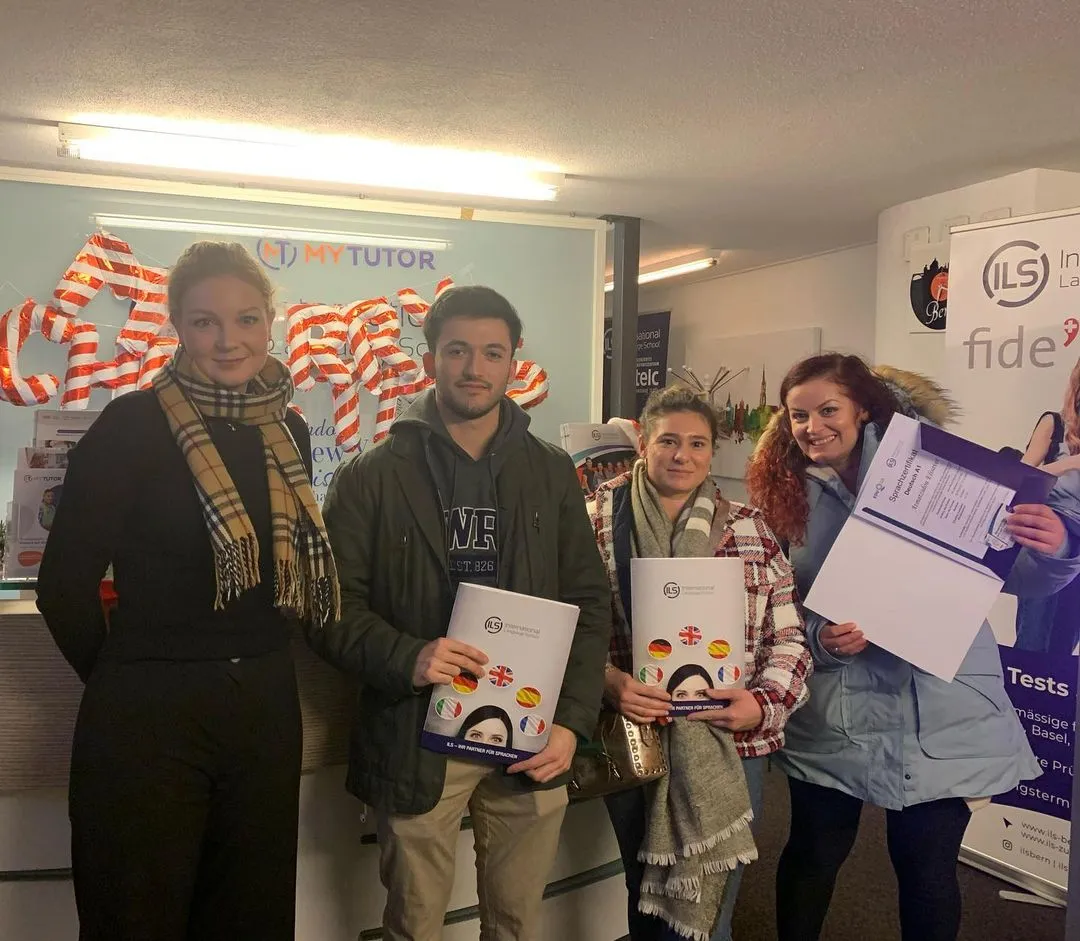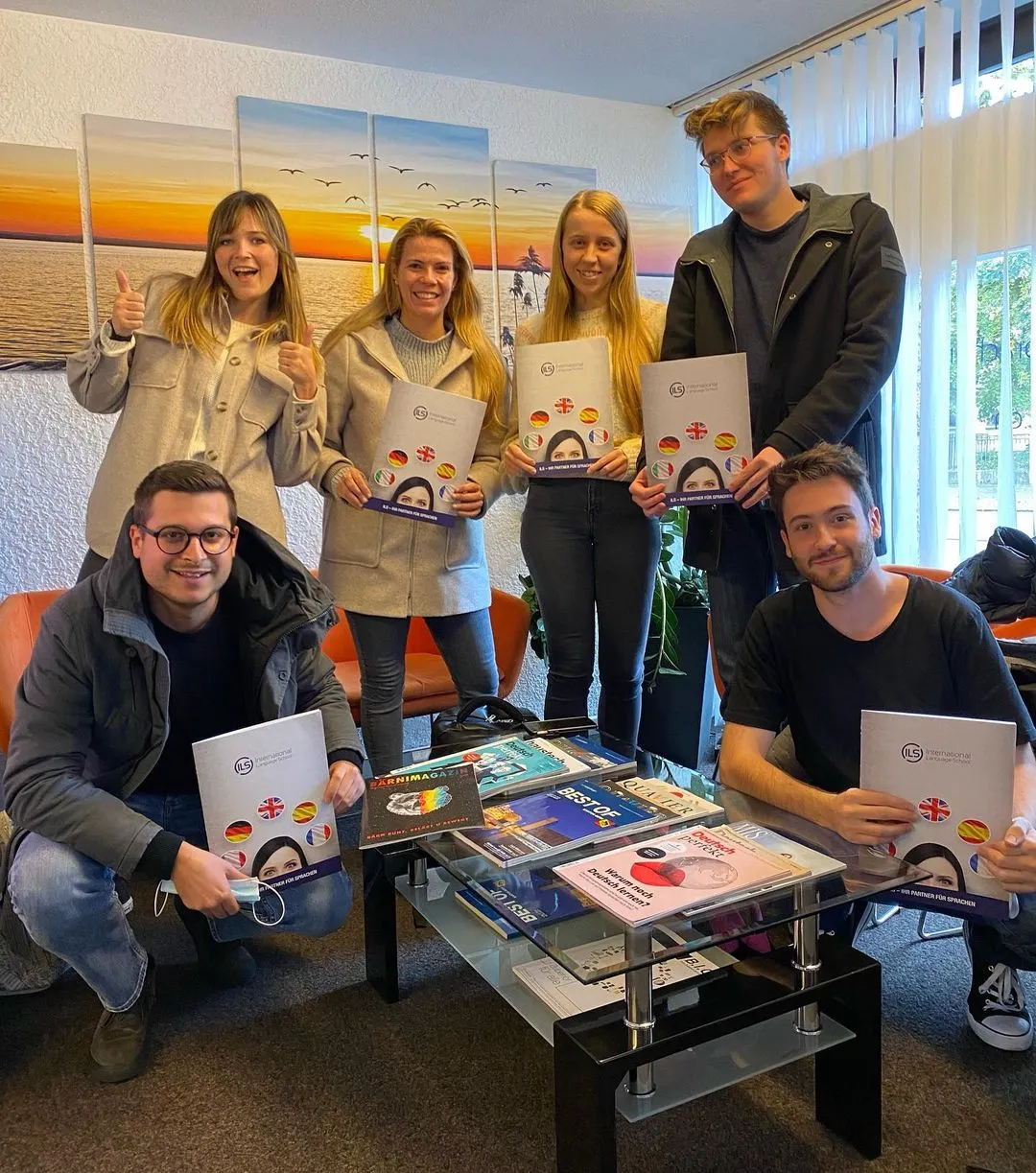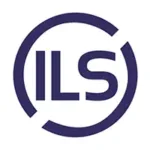| Kids&Teens Course Options |
|---|
| Holiday language courses |
| Summer Holidays |
| Christmas Holidays |
| Autumn Holidays |
| Sports Holidays |
| Spring Holidays |
| YOUR ADVANTAGES |
|---|
| Counselling in German, English, French and Italian |
| Free placement test in German, French and English |
| Small groups of 3 to max. 8 students |
| Free consultation |
| Regular activities outside school |
| All advantages |

What language levels are there? Which language level am I currently at? Which language level do I have to reach? What level is the exam? These are just a few of the many questions that language learners often ask and seek answers to.
One answer with many variables
It is difficult to answer this question concretely. Various factors may have an influence, such as: Age; motivation; intensity of the study; language background of the student; relative difficulty of the foreign language; knowledge of other languages, etc....
For us as a language school ILS Bern, ILS Aarau, ILS Zürich and ILS Basel it is also important to know the language level of each individual in order to be able to create a suitable curriculum. That is why we carry out a so-called aptitude test / language test or placement test at the beginning of our introduction. This enables us to place the students in the appropriate groups.
The language levels
The Common European Framework of Reference (CEFR) is a guideline with descriptions of the level at which you master a language and divides it into 6 different levels - from beginner (A1) to advanced (C2).
The Basic User or Start Language User - Levels A1 and A2
In general, the basic user is familiarised with the language and needs help in the foreign language learned.
Level A1
A1 is the lowest level. The student mainly uses and understands short, simple and familiar words and (standard) sentences or questions. About him/herself, the family and the immediate environment. Speaking is in separate words and sentences. The texts should be short. The other person must speak slowly and help. A student at level A1 knows a maximum of 1000 words.
Level A2
The pupil understands simple sentences and frequently used words about everyday things and can talk about familiar topics in everyday situations. He or she can describe things in his or her immediate environment in simple terms. Pupils use mainly high frequency words and simple phrases, often standard sentences. The texts are short. A level A1 language user knows up to 2000 words.
The normal integration test is at level A2. With this integration test you can obtain a Swiss residence permit. However, you cannot register for any study program Register or go to work with level A2.
The independent user
Level B1
The language learner can understand the main points from texts, on familiar topics such as at work, school and leisure. Learners can say or write familiar matters of personal interest in a simple text. They can also describe experiences, events, dreams, hopes and ambitions, and give a reason or explanation for an opinion or plan. The vocabulary is sufficient to talk about these things. This level is quite sufficient to be able to communicate fully and navigate independently when travelling abroad in the language area. Students know about 5000 words at B1 level.
Level B2
The language user can understand a longer conversation and complex arguments if the topic is somewhat familiar. It is no longer just about familiar topics like work and education. The texts can be longer. The student can understand articles on current affairs and literary prose. The use and application of different words is not a problem if a dictionary is available. There is enough language proficiency to express his or her opinion on a variety of topics of interest. Pupils have a good command of grammar and no longer make mistakes that could hinder comprehension.
The competent user
The competent user is largely proficient in the language and can use it almost as they wish. These are language users with a higher level of education: college or university.
Level C1
The language user can understand a longer conversation at this level. Even if this is not clearly structured and much is not said explicitly. He or she can understand long complex factual and literary texts. And understands specialised articles and longer technical instructions, even if the student is not directly from or familiar with this field. They can give a clear and good description of something. Pupils can express themselves spontaneously and are very comfortable giving an account.
Level C2
C2 is the level of near native speaker with an academic level of thinking. The language user can easily understand spoken and written language (including abstract, complex and technical texts) in any form, whether in direct contact, over the radio or television. Even if someone speaks quickly, someone from this level can understand it comfortably. Students can provide a clear, smooth description or argument in an appropriate style and with a logical structure, and can write reports or summarize articles, summaries, and reviews.
Language tests and receive a language certificate
The Common European Framework of Reference (CEFR) specifies exactly what you need to do in a foreign language to prove that you have mastered that language at a certain level. The scores on this exam are part of the internal CEFR. This way they can test exactly what level a student has for a particular skill.
The introduction of the CEFR has consequences for the nature of the test. The test assesses each individual language learner according to what they have mastered and what they have not. In the assessment, not much attention is paid to what is wrong, but rather to what has been answered, understood and reproduced correctly. In short, in the assessment models for CEFR tests, the CEFR is based on positively worded descriptions. The language levels and the tests are based on what someone can or should do at a certain level. As in the above descriptions of each language level.
How many hours do you need to reach your learning goal?
To come back to the key question: How many hours do you really need to achieve your learning goal? There is no right answer, but there is definitely a realistic estimate, which is as follows:
With a language course or an intensive course and, if necessary, additional private lessons, progress can be made much faster.

